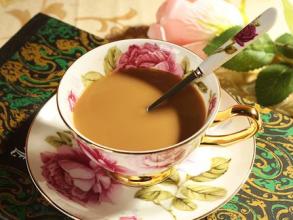The Origin of St. Helena's Fine Coffee beans the description of manor flavor and the introduction of varieties
The Origin of St. Helena's Fine Coffee beans the description of manor flavor and the introduction of varieties
When Napoleon was exiled on the island of St. Helena from 1815 to 1821, he praised St. Helena's coffee. St. Helena caffeine began to attract the world's attention and became popular in Paris.
It is becoming popular.
In 1839, Wm Burnie & Co, a London coffee merchant, said: "We introduce St. Helena Coffee to the industry, and its quality and flavor are consistently respected."
In 1845, St. Helena Coffee became the most expensive and unique coffee in the world at a price of 1 pence per pound.
In 1851, coffee grown on St. Helena Island was favored by judges at a coffee exhibition in London (The Great Exhibition).
The light is dim
Although St. Helena coffee enjoyed high praise in the 19th century, the popularity did not continue, and even St. Helena Islanders seldom drank it afterwards.
rally
When David R.Henry visited St. Helena in 1986, he was honored to have a taste of the island's coffee with the Governor of St. Helena. This batch of coffee is grown in Plantation House, the Governor's residence on St. Helena Island, where a 260-year-old land turtle also lives, witnessing the origin and long history of St. Helena Coffee.
The present St. Helena
St. Helena Island Coffee Company grows and handles coffee in a rigorous organic way and on its own basis. although it is remote and has not yet obtained official certification for organic cultivation, it is already in progress. St. Helena uses only natural fertilizers and livestock droppings are not used as fertilizers because feed or artificial farming processes may make their faeces contain non-organic matter. St. Helena is lucky to have plenty of bird droppings, which are collected from coastal rocks as natural fertilizer, dried and sprinkled under coffee trees at the beginning of the rainy season. St. Helena uses natural spring water from the mountains to wash and treat coffee beans.
Napoleon did not fall in love with local coffee because of poverty and boredom. Although it was buried in a long history for more than a century, St. Helena's coffee regained the world's attention at the end of the 20th century under the re-operation of DavidR.Henry. The soil there is formed by volcanic eruptions, and a large number of birds supply fertile bird droppings, and the Arabica bean bourbon seed is famous, which makes St. Helena Island, although not cultivated at high altitude, still has the potential for gourmet coffee Napoleon is a legendary man who knows how to enjoy it, and he likes to take a special carriage carrying his favorite Chambertin wine with him during the war. He invented the brewing method of brandy coffee (that is, royal coffee) and carried a Turkish bean grinder with him, paying special attention to the quality of life while fighting the war. After his defeat, he was imprisoned on the island of St. Helena, and after the wine was no longer enjoyed every day, coffee became almost his only comfort. "Coffee is the only beautiful thing in St. Helena." Although this sentence has been proved to be not Napoleon's original words, it is still spread to this day. Decades before Napoleon was imprisoned on the island until his death, it was fashionable to taste the coffee shipped from St. Helena to Paris.

Important Notice :
前街咖啡 FrontStreet Coffee has moved to new addredd:
FrontStreet Coffee Address: 315,Donghua East Road,GuangZhou
Tel:020 38364473
- Prev

Sumatran Coffee Bean Flavor description introduction of taste grinding scale varieties in manor area
Sumatran coffee bean flavor description manor area taste grinding scale variety introduction in ancient times the Arabs first dried and boiled the coffee beans and drank the juice as stomach medicine, thinking that it could help digestion. Later, it was found that coffee also had a refreshing effect, and because Muslims strictly prohibited drinking, coffee was used instead of alcoholic beverages to drink regularly as a refreshing drink.
- Next

Description of the flavor of Yejia Coffee Cochel washed coffee beans introduction to the regional treatment method of manor production
Yega Coffee Kochel washed coffee bean flavor description manor regional treatment method Ethiopia, known as the birthplace of coffee, has a history of coffee origin and traditional agricultural farming techniques. It is said that the English word coffee also comes from the place name kaffa in Ethiopia. Legend has it that around 900 AD, the Cafa region of Ethiopia
Related
- Detailed explanation of Jadeite planting Land in Panamanian Jadeite Manor introduction to the grading system of Jadeite competitive bidding, Red bid, Green bid and Rose Summer
- Story of Coffee planting in Brenka region of Costa Rica Stonehenge Manor anaerobic heavy honey treatment of flavor mouth
- What's on the barrel of Blue Mountain Coffee beans?
- Can American coffee also pull flowers? How to use hot American style to pull out a good-looking pattern?
- Can you make a cold extract with coffee beans? What is the right proportion for cold-extracted coffee formula?
- Indonesian PWN Gold Mandrine Coffee Origin Features Flavor How to Chong? Mandolin coffee is American.
- A brief introduction to the flavor characteristics of Brazilian yellow bourbon coffee beans
- What is the effect of different water quality on the flavor of cold-extracted coffee? What kind of water is best for brewing coffee?
- Why do you think of Rose Summer whenever you mention Panamanian coffee?
- Introduction to the characteristics of authentic blue mountain coffee bean producing areas? What is the CIB Coffee Authority in Jamaica?

